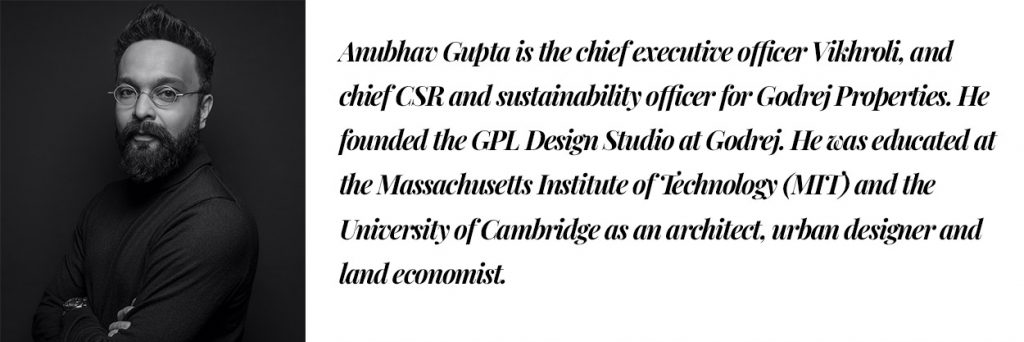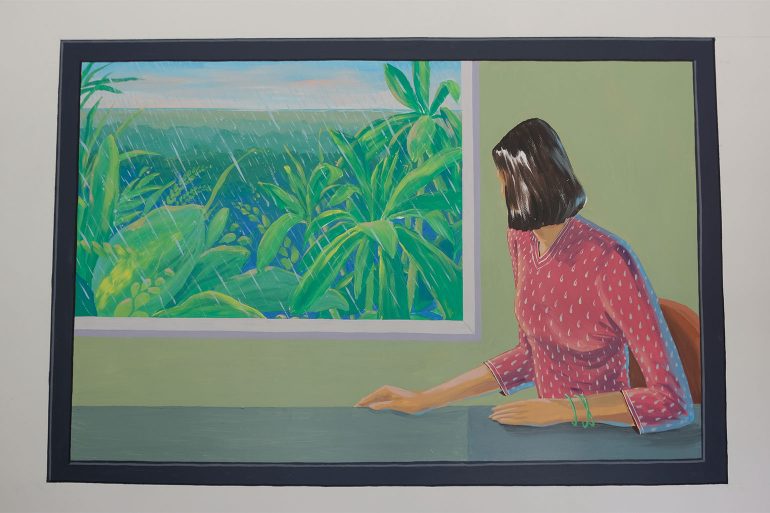‘Those Who Design’ is a series of conversations on design and architecture hosted by Anubhav Gupta, CEO Vikhroli, chief CSR and sustainability officer, Godrej Properties. This is the introductory article of the series.
Historically, a tripartite societal order had been extensively adopted that further divided the social realm into those who pray, those who fight, and those who work. The equitable nature of the orders may be debatable, however it was this categorisation that reinterpreted the social construct into the three ‘estates’ in many societies across the world. More recently, with widespread acceptance of democracy, the powers within the country were divided as the legislature, administration and judiciary. Gradually, a fourth estate or pillar emerged. Now known as independent press or media, it refers to the influencing forces outside the established power structure.
While the creators and thinkers were always a silent estate shaping the realm, there now appears a necessity to include a fifth estate – those who design.
The edifice of the estates reflect in governing frameworks across the world and can be seen in the way governance operates in India as well due to its historical lineage. With time, the formal construct does not seem to be adequately defined by the four estates alone. While the creators and thinkers were always a silent estate shaping the realm, there now appears a necessity to include a fifth estate – those who design.
Evidence lies within the idea of Design Thinking that is now seen to be shaping all sectors including healthcare, banking, human resources, retail, hospitality, mobility, technology, and government among others. In corporate boardrooms, conversations around design seem to be formulating solutions for people, products, processes, partnerships, profits and the planet.
I often recall my days at design school and the way we conceived solutions as students. We had fresh ideas—many theoretically correct but practically incorrect, many innovative but technologically too advanced. However, the inquisitiveness to gain fresh perspectives—which primarily emerged from conversations—remained constant; conversations with classmates, mentors, professors, and seniors. I have to say I miss these discussions today and wonder why healthy debates, and critiques (what we called ‘crits’) were left in the hallways of design school? Isn’t it time we rethink the relationship between design practices and constructive criticism? Isn’t it time to engage in dialogues on design with users or the general public?
A design critique opens up conversations between designers, enriching their creative practice. Created within a historical framework and a social construct, critique could be an observation, an explanation, a point of view or point of departure. It could begin to define the role of design and its relevance in truly shaping our realm today.
With the declared national imperative for self-sustenance, the question to ask is why not also Design in India as we Make in India?
The strength of such a design critique lies in its capability to analyse aspects through a defined methodology and a larger understanding of its relevance to the design community, society and the world at large. With the declared national imperative for self-sustenance, the question to ask is why not also Design in India as we Make in India? With India’s expansive and rich repository of design heritage, in the fields of textile, art, woodcraft, fashion, furniture, architecture and allied fields, an encouragement not just to manufacture but also Design in India would be an exploration that would be worth celebrating. In order to do so, it may be pertinent that one explores various narratives within borders and across disciplines.
The intent of the articles in this series is to discuss the design of today, especially in India, through the lens of varied disciplines at varied scales from urban planning right up to product design and graphic design.
Evocative modes through which we generate critiques to create discourses would encourage new judgements, conclusions and engagements that may eventually catalyse self and community growth. Deciphering works through layers of the design process that relates between client – designer, designer – product, product – user, user – society, society – planet would bring us to the concerns that string together the intent, resource deployment, inspiration, effectiveness and responsibility. The narrative that binds these aspects is perhaps the story that defines the design process and eventually its relationships to the estates and society as a whole.
The intent of the articles in this series is to discuss the design of today, especially in India, through the lens of varied disciplines at varied scales from urban planning right up to product design and graphic design. A rigorous methodology is essential and much energy is going to be directed towards understanding the process through drawings, sketches, conversations, the ubiquitous video calls necessitated in these times and, some serious ‘Indian Design Thinking’.
The hope is that critical conversations may bring the focus to not only the designers and their work, but also the necessary ecosystem and the emerging relevance of the Fifth Estate.
***

Feature image credits: Studio Vikhroli where this was painted by artist and illustrator Sameer Kulavoor.

